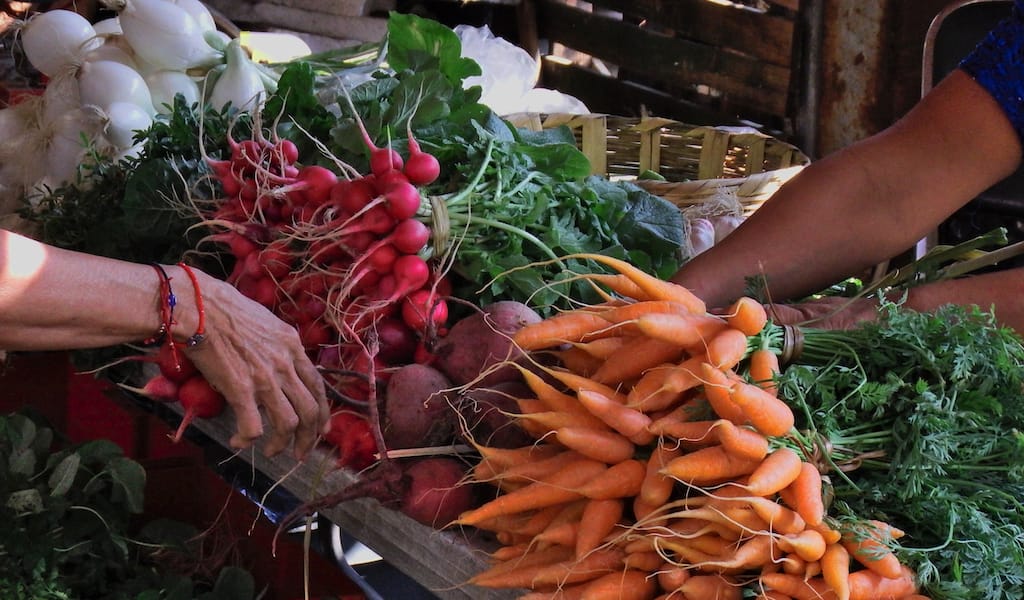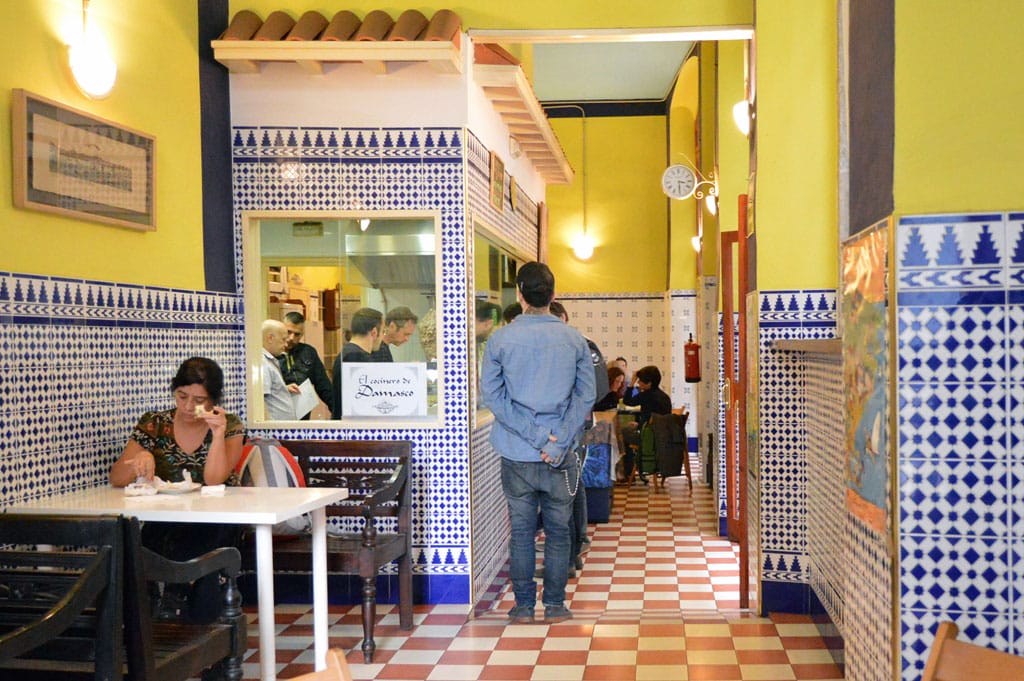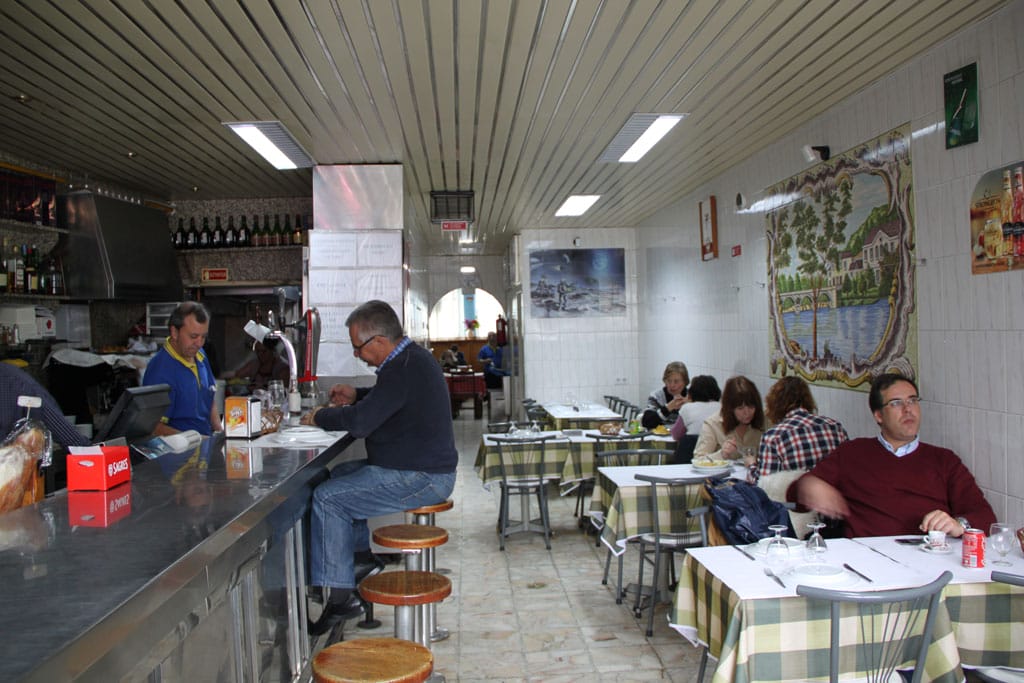Editor’s Note: This spot is sadly no longer open.
Whether they’re residents of or visitors to Oaxaca City, those who find themselves craving a deep bowl of caldo de res (beef soup), a foamy chocolate atole (a warm, sweetened corn and cacao drink), or simply a bit of chisme – gossip – can find all three at the Pochote Reforma. A weekly organic market uniting growers and vendors that hail from nearby towns such as Macuilxochitl, San Miguel del Valle, and Tanetze de Zaragoza, “el Pochote,” as it’s known locally, is one of Oaxaca’s most down-to-earth markets, offering visitors not only fresh and organically raised fruits and vegetables, but also a sense of community that has kept shoppers coming back after 20 years and five location changes.
Of her many devoted regulars, Raday Quero Cruz, 59, one of the Pochote’s original vendors who joined the market when it got its start back in 2003, says this: “They’re not just customers to me.” Holding forth from her post behind a verdant display of mustard greens, lettuces, celery, and leafy bunches of cilantro, she elaborates, “They’re part of the family. That’s the difference between here and other markets.”
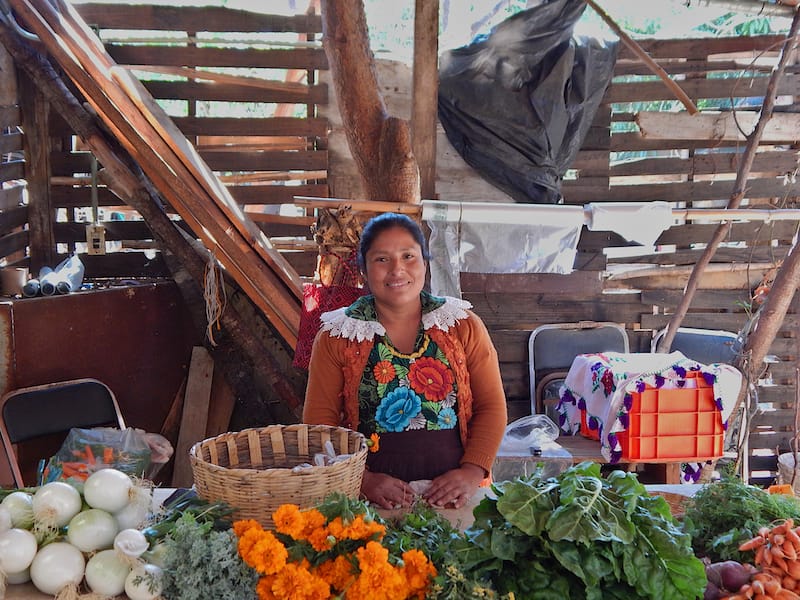
On Friday mornings, when the Pochote opens for the weekend, a quick glance around the outdoor market’s shaded courtyard provides visual confirmation of its familial atmosphere: Long folding tables are occupied by entire families, from grandparents down to still-nursing infants. Ringed by the market’s 23 vendor stalls, the tables are crowded with the aromatic breakfast offerings cooked up by vendors: Red clay mugs brimming with panela-sweetened café de olla from Café Yu-Van, perhaps, plus some of Cruz’s homemade tamales de mole con pollo and Agustina Colmenares Colmenares’s tostadas piled high with the spiced, smoked beef sausage elaborated in her village Ejutla de Crespo.
“This dish is only prepared during this season,” market regular Ana Maria Vasquez, 61, says as she gestures toward her steaming plate of white bean, cactus, and dried shrimp stew. Vasquez makes time to come to the Pochote each Friday, explaining that the place’s food and ambience remind her of the markets of her youth.
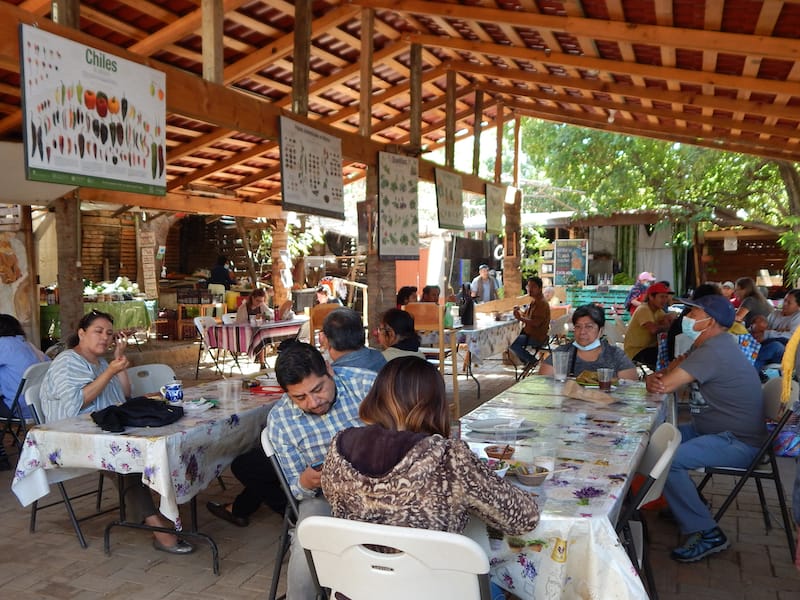
“When we were little, all the markets were like this,” she tells us. “All the food was produced by the people selling it. Whereas today, everything is shipped in from Puebla or from the United States.”
For shoppers and eaters who prioritize local, seasonal fare, the Pochote’s range of prepared foods as well as its abundance of agrochemical-free, seasonal produce provides something for everyone. Fragrant Ataulfo mangoes tempt from their display, as do round bola avocados and spicy, bright-pink radishes; there’s hormone-free chicken and rabbit, goat’s milk cheeses, and even naturally-dyed wool garments woven locally in the village of Teotitlán. And that variety is undoubtedly part of what has kept customers loyal to the Pochote over the course of two decades.
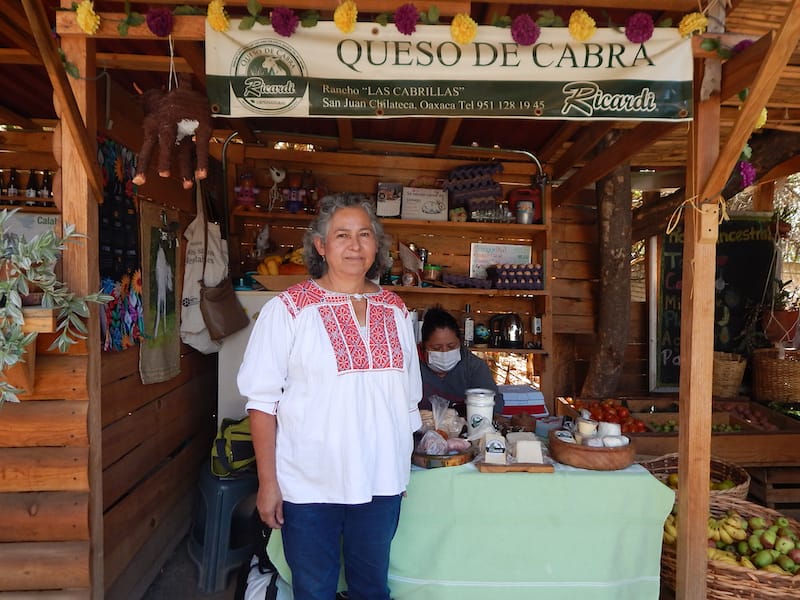
As Carmina Ricardi de la Cruz, 60, the producer of those goat’s milk cheeses, recounts, the market was first convened by revered Oaxacan painter and philanthropist Francisco Toledo, who was a consistent supporter of social initiatives in Oaxaca prior to his death in 2019. In 2003, Ricardi tells us, Toledo put out a call for organic producers to sell their wares – rent-free – on his property located in downtown Oaxaca. The space was dominated by large pochote trees, a flowering tree whose bark is punctuated by distinctive spikes, giving the nascent market its name.
Back in the early aughts, Ricardi says, “It was difficult to find organic markets in Mexico. Actually, we’re one of the oldest organic markets in the country.” As the maker of what are now some of the most sought-after goat’s milk cheeses in the region, Ricardi has seen the market through some significant changes since she joined the original iteration, as the Pochote weathered a peripatetic existence. After Toledo reclaimed his space to build a home in 2007, the market occupied other locations in Oaxaca – some branches of which continue today – ultimately landing in its Reforma courtyard in September of 2019.

Since day one of the market, Ricardi recalls, it has attracted shoppers interested in boosting or maintaining their health with local, pesticide-free foods – a trend that grew stronger shortly after the Pochote opened its doors in Reforma, and Covid-19 took hold. “We never closed during the pandemic,” she says. “Not even one day.” As an increasing number of people decided to clean up their diets in order to bolster their immune systems, new customers started frequenting the market in addition to the Pochote’s regulars, with the vendors doing their best to offer the products these customers were looking for. “It’s nice to be able to provide fresh, healthy food for people,” Ricardi tells us. “It makes you feel good.”
And in addition to customers being part of the family at Pochote, its vendors feel that they belong to a tribe as well, with some of them having worked together almost every weekend since 2003. Both Ricardi and Cruz have sold at the market since day one, along with comal, or ceramic griddle, cook Colmenares and several others still present at the market. “We’ve known each other for a long time now, and we always do our best to support one another,” Cruz notes.
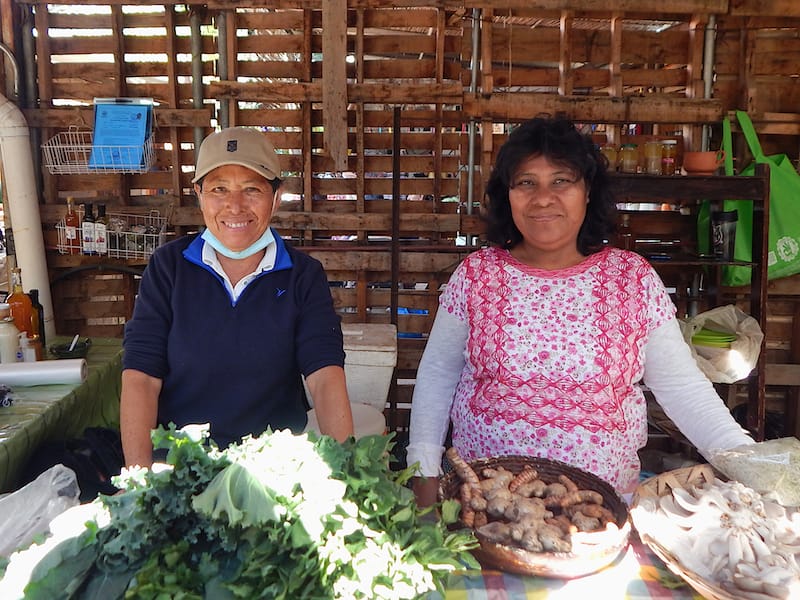
Happily for lovers of fresh food, the concept of family is not just a figurative one at the Pochote, with the children of current vendors getting involved in their parents’ businesses in numerous ways. There’s Pedro Miguel Javier, 23, son of fresh fish vendors Pedro Miguel Pastor and Carmen Javier Silva, who manages the market’s social media pages and is growing its program of workshops and demonstrations; Alejendrino Cruz Colmenares, 29, son of Agustina, who sells the lightly fermented fruit beverage tepache; and Flor Santiago Lopez, 46, daughter of Pedro Domingo Santiago and Virginia Rita Lopez of the village Huayapam, who attends to the steady stream of customers seeking a cool bowl of tejate, the town’s famous prehispanic drink made from toasted corn, fermented cacao, the pit of the mamey fruit, and the flower flor de cacao.
“If we’ve lasted this long,” Cruz notes, “it’s because we continue to grow. More and more people seek us out; every year there are more customers. And with the children of our vendors involved, we’ll continue on,” she tells us. “Yes, we’re here preparing the future generations of the market.”
 February 1, 2017 Syrian Shawarma in Barcelona
February 1, 2017 Syrian Shawarma in Barcelona
We can't get enough of the Syrian shawarma, humus and falafel at Salem Kabbaz's El […] Posted in Barcelona July 21, 2016 O Satelite da Graça
July 21, 2016 O Satelite da Graça
Perched on Lisbon’s highest hilltop, Graça has a villagey feel and is probably the best […] Posted in Lisbon January 16, 2017 Hasegawa Saketen
January 16, 2017 Hasegawa Saketen
Sake is a very deeply ingrained part of Japanese culture and its function is everything […] Posted in Tokyo
Lauren RothmanLauren Rothman
Published on April 10, 2023
Related stories
February 1, 2017
BarcelonaWe can't get enough of the Syrian shawarma, humus and falafel at Salem Kabbaz's El Cocinero de Damasco in Barcelona. Born in 1945, Kabbaz came to Barcelona in 1980 and has worked in restaurants in the city ever since.
July 21, 2016
LisbonPerched on Lisbon’s highest hilltop, Graça has a villagey feel and is probably the best district to absorb stunning views over the Portuguese capital. Home to plenty of bakeries, cafes and two of the city’s most beautiful viewpoints, it does, however, risk irreversible damage because of the real estate boom affecting much of the city…
January 16, 2017
TokyoSake is a very deeply ingrained part of Japanese culture and its function is everything from ceremonial to social. It might be surprising then to know that there are remarkably few establishments in Tokyo dedicated to simple sake tasting. This is perhaps because the roots of public sake drinking stretch back to the 1800s, when…







































